Opinion
Daytime robbery called DDO
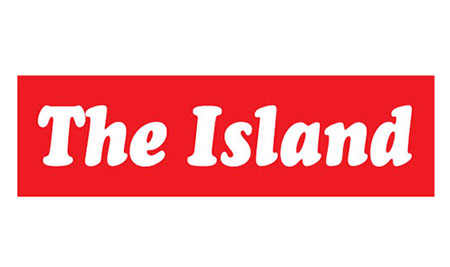
by Sumanasiri Liyanage
Last Friday, the organisers of ‘UNITE’ convened a meeting of all the oppositional parties, trade unions amd civil society organisations at the Public Library in Colombo. UNITE is an umbrella organisation comprising some leading trade union organisations like Ceylon Bank Employees Union, United Federation of Labor, Ceylon Teachers Union, FTZ unions, Postal Union and other several leading trade unions, and the collective of multiple social movements.
At the outset, Jagath Gurusinghe, General Secretary of the UFL explained briefly but eloquently the principal focus of the meeting. He informed the gathering that the meeting was a just one more step in the on-going protest and agitation against Ranil-Rajapaksea government and its proposal for domestic debt restructuring. The steps that have been already taken was lucidly explained. The focus of the meeting is three-fold. 1. A brief critical analysis of the CBSL proposals and their implications to the working people (awareness building); 2. The work done so far to counter and stop the implementation of DDO (auditing the past work); 3. Prepare a joint action plan that includes all the oppositional political parties, groups and social movements (the front formation). As Jagath Gurusinghe of the Telecom Union has informed that the campaign against the government’s DDO proposals by the united action front has been tentatively fixed for August 28.
Revisiting CBSL proposal to the Parliament
Based on many an analysis of DDO, this article is focused on a different dimension, here the methodology that been adopted is a simple calculation based on available and projected data. The release of the annual report of the Employees Provident Fund (EPF) is unusually and invariably delayed so that we have to base ourselves on two to three-year old data. Secondly, our analysis is on the general EPF and not on specific sector or company run superannuation funds. Notwithstanding the fact that the devaluation of the principle fund that may be attributed to price inflation, the negative influence brought down by it is bracketed in the context of this article. Nonetheless, it is important to note that the adverse impact of inflation is substantial and continuous.
The current value of the EPF is Rs. 3,460 billion, making it the most lucrative single capital resource in Sri Lanka. The fund has been growing annually. Its main injections and withdrawals are plotted in Figure 1: Domestic Debt Restructuring ex ante.
The main injections to the pool of resources has been two-fold. The are: 1. Monthly contributions of the members of the fund that comprises private, corporate and the state-owned enterprises; and 2. Annual earnings of the fund that comes from myriad forms of fund’s investment. As the Figure 1 shows that while the first amounted in 2022 to Rs 193 billion, the second was to Rs. 285 billion. Both totaling Rs. 478 billion. Let me now turn to annual withdrawals form the pool that are also two-fold, namely, 1.
Total annual payments to the members of the EPF when they are retired; and 2. Tax payments to government that ow stands at 14 per cent. Hence, the total withdrawals are Rs 211 billion (Rs. 163 plus Rs 48 billion). It is interesting to note that the EPF tax payments are calculated as Dr W. A. Wijewardana has shown in his excellent article on the subject on gross income not and not on net income (Gross Income – Interest Payments). Balancing total injections with total withdrawals, it is not difficult to calculate the annual net receipts to the resource pool that amounted to Rs 267 billion (say in 2002) that we call the total annual net returns of the pool. What does it mean? EPF account holders’ social security savings increased on average by 7.71% approximately. That amount may vary with the rate and the amount of earnings, tax rate assuming membership of the EPF remain unchanged. (See Figure 2)
Now comes the so-called debt restructuring. The objective of the debt restructuring is to reduce the total government financial needs (hereafter GFN) from the current 34.5 percent of the GDP to annual average of 13 percent of GDP between 2027- 2032. The Governor of the Central Bank says the government has already adopted stringent measures that are economically and socially costly in order to reduce it. These measures include revenue enhancing measures, and expenditure rationalisewasation. Moreover, many more taxes would come in near future. What are the perimeter and parameters of domestic debt restructuring? What has Ranil- Rajapakss government proposed?
The Impact of DDR on Superannuation Funds
To make the argument as simple and less complicated as possible, as indicated above, some assumptions are made. For example, it has been assumed that the ratios between the total value of the EPF and its constituent elements remain unchanged. The proposals say that the superannuation funds will not face a haircut. However, they include exchanging its funds to long-term bonds, interest reduction after 2025 to 9 percent, and increase of tax rate from 14 percent to 30 percent to some superannuation funds. According the CBSL calculation, reduction of GFN by 0.05 percent of the GDP is projected. In simple language, as Figure 2 shows, this means that Rs. 113 billion would be involuntarily taken away from the EPF to DDR. As a result, the total withdrawals from the fund increases from Rs. 211 billion to Rs. 324 billion. Having assumed that other factors remain unchanged, the net annual receipts to the resource pool would be in the vicinity of Rs. 154 billion. A significant reduction from Rs. 267 billion prior to the DDR. Hence, the net annual rate of return would be lowered to 4.45 percent.
In the absence of the DDR, the total value of the fund at the net return of 7.71% will increase to Rs 9,396.74 billion in 2035. With the domestic debt restructuring the total value of the EPF would increase only to Rs 6,124.81 billion in 2035. Rs. 3,271.93 will be robbed from the EPF in the coming years. This is approximately a 34.8 percent capital loss.
The writer is a former teacher in political economy. E-mail: sumane_l@yahoo.com
Opinion
The policy of Sinhala Only and downgrading of English
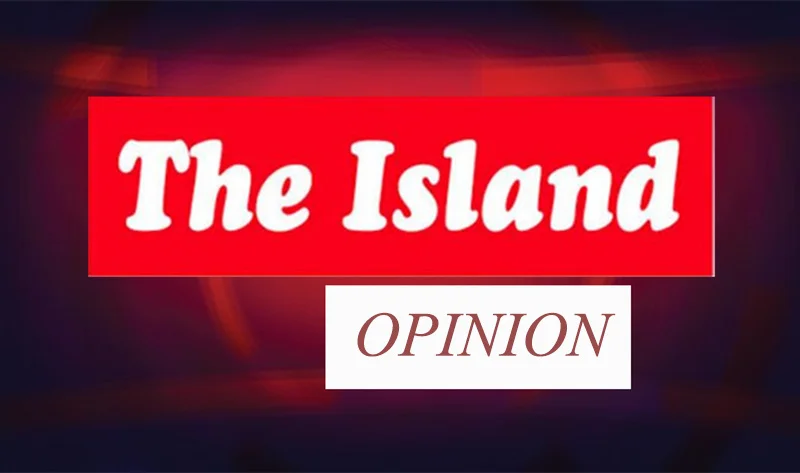
In 1956 a Sri Lankan politician riding a great surge of populism, made a move that, at a stroke, disabled a functioning civil society operating in the English language medium in Sri Lanka. He had thrown the baby out with the bathwater.
It was done to huge, ecstatic public joy and applause at the time but in truth, this action had serious ramifications for the country, the effects have, no doubt, been endlessly mulled over ever since.
However, there is one effect/ aspect that cannot be easily dismissed – the use of legal English of an exact technical quality used for dispensing Jurisprudence (certainty and rational thought). These court certified decisions engendered confidence in law, investment and business not only here but most importantly, among the international business community.
Well qualified, rational men, Judges, thought rationally and impartially through all the aspects of a case in Law brought before them. They were expert in the use of this specialised English, with all its meanings and technicalities – but now, a type of concise English hardly understandable to the casual layman who may casually look through some court proceedings of yesteryear.
They made clear and precise rulings on matters of Sri Lankan Law. These were guiding principles for administrative practice. This body of case law knowledge has been built up over the years before Independence. This was in fact, something extremely valuable for business and everyday life. It brought confidence and trust – essential for conducting business.
English had been developed into a precise tool for analysing and understanding a problem, a matter, or a transaction. Words can have specific meanings, they were not, merely, the play- thing of those producing “fake news”. English words as used at that time, had meaning – they carried weight and meaning – the weight of the law!
Now many progressive countries around the world are embracing English for good economic and cultural reasons, but in complete contrast little Sri Lanka has gone into reverse!
A minority of the Sinhalese population, (the educated ones!) could immediately see at the time the problems that could arise by this move to down-grade English including its high-quality legal determinations. Unfortunately, seemingly, with the downgrading of English came a downgrading of the quality of inter- personal transactions.
A second failure was the failure to improve the “have nots” of the villagers by education. Knowledge and information can be considered a universal right. Leonard Woolf’s book “A village in the Jungle” makes use of this difference in education to prove a point. It makes infinitely good politics to reduce this education gap by education policies that rectify this important disadvantage normal people of Sri Lanka have.
But the yearning of educators to upgrade the education system as a whole, still remains a distant goal. Advanced English spoken language is encouraged individually but not at a state level. It has become an orphaned child. It is the elites that can read the standard classics such as Treasure Island or Sherlock Holmes and enjoy them.
But, perhaps now, with the country in the doldrums, more people will come to reflect on these failures of foresight and policy implementation. Isn’t the doldrums all the proof you need?
by Priyantha Hettige
Opinion
GOODBYE, DEAR SIR

It is with deep gratitude and profound sorrow that we remember Mr. K. L. F. Wijedasa, remarkable athletics coach whose influence reached far beyond the track. He passed away on November 4, exactly six months after his 93rd birthday, having led an exemplary and disciplined life that enabled him to enjoy such a long and meaningful innings. To those he trained, he was not only a masterful coach but a mentor, a friend, a steady father figure, and an enduring source of inspiration. His wisdom, kindness, and unwavering belief in every young athlete shaped countless lives, leaving a legacy that will continue to echo in the hearts of all who were fortunate enough to be guided by him.
I was privileged to be one of the many athletes who trained under his watchful eye from the time Mr. Wijedasa began his close association with Royal College in 1974. He was largely responsible for the golden era of athletics at Royal College from 1973 to 1980. In all but one of those years, Royal swept the board at all the leading Track & Field Championships — from the Senior and Junior Tarbat Shields to the Daily News Trophy Relay Carnival. Not only did the school dominate competitions, but it also produced star-class athletes such as sprinter Royce Koelmeyer; sprint and long & triple jump champions Godfrey Fernando and Ravi Waidyalankara; high jumper and pole vaulter Cletus Dep; Olympic 400m runner Chrisantha Ferdinando; sprinters Roshan Fernando and the Indraratne twins, Asela and Athula; and record-breaking high jumper Dr. Dharshana Wijegunasinghe, to name just a few.
Royal had won the Senior & Junior Tarbats as well as the Relay Carnival in 1973 by a whisker and was looking for a top-class coach to mould an exceptionally talented group of athletes for 1974 and beyond. This was when Mr. Wijedasa entered the scene, beginning a lifelong relationship with the athletes of Royal College from 1974 to 1987. He received excellent support from the then Principal, late Mr. L. D. H. Pieris; Vice Principal, late Mr. E. C. Gunesekera; and Masters-in-Charge Mr. Dharmasena, Mr. M. D. R. Senanayake, and Mr. V. A. B. Samarakone, with whom he maintained a strong and respectful rapport throughout his tenure.
An old boy of several schools — beginning at Kandegoda Sinhala Mixed School in his hometown, moving on to Dharmasoka Vidyalaya, Ambalangoda, Moratu Vidyalaya, and finally Ananda College — he excelled in both sports and studies. He later graduated in Geography, from the University of Peradeniya. During his undergraduate days, he distinguished himself as a sprinter, establishing a new National Record in the 100 metres in 1955. Beyond academics and sports, Mr. Wijedasa also demonstrated remarkable talent in drama.
Though proudly an Anandian, he became equally a Royalist through his deep association with Royal’s athletics from the 1970s. So strong was this bond that he eventually admitted his only son, Duminda, to Royal College. The hallmark of Mr. Wijedasa was his tireless dedication and immense patience as a mentor. Endurance and power training were among his strengths —disciplines that stood many of us in good stead long after we left school.
More than champions on the track, it is the individuals we became in later life that bear true testimony to his loving guidance. Such was his simplicity and warmth that we could visit him and his beloved wife, Ransiri, without appointment. Even long after our school days, we remained in close touch. Those living overseas never failed to visit him whenever they returned to Sri Lanka. These visits were filled with fond reminiscences of our sporting days, discussions on world affairs, and joyful moments of singing old Sinhala songs that he treasured.
It was only fitting, therefore, that on his last birthday on May 4 this year, the Old Royalists’ Athletic Club (ORAC) honoured him with a biography highlighting his immense contribution to athletics at Royal. I was deeply privileged to co-author this book together with Asoka Rodrigo, another old boy of the school.
Royal, however, was not the first school he coached. After joining the tutorial staff of his alma mater following graduation, he naturally coached Ananda College before moving on to Holy Family Convent, Bambalapitiya — where he first met the “love of his life,” Ransiri, a gifted and versatile sportswoman. She was not only a national champion in athletics but also a top netballer and basketball player in the 1960s. After his long and illustrious stint at Royal College, he went on to coach at schools such as Visakha Vidyalaya and Belvoir International.
The school arena was not his only forte. Mr. Wijedasa also produced several top national athletes, including D. K. Podimahattaya, Vijitha Wijesekera, Lionel Karunasena, Ransiri Serasinghe, Kosala Sahabandu, Gregory de Silva, Sunil Gunawardena, Prasad Perera, K. G. Badra, Surangani de Silva, Nandika de Silva, Chrisantha Ferdinando, Tamara Padmini, and Anula Costa. Apart from coaching, he was an efficient administrator as Director of Physical Education at the University of Colombo and held several senior positions in national sporting bodies. He served as President of the Amateur Athletic Association of Sri Lanka in 1994 and was also a founder and later President of the Ceylonese Track & Field Club. He served with distinction as a national selector, starter, judge, and highly qualified timekeeper.
The crowning joy of his life was seeing his legacy continue through his children and grandchildren. His son, Duminda, was a prominent athlete at Royal and later a National Squash player in the 1990s. In his later years, Mr. Wijedasa took great pride in seeing his granddaughter, Tejani, become a reputed throwing champion at Bishop’s College, where she currently serves as Games Captain. Her younger brother, too, is a promising athlete.
He is survived by his beloved wife, Ransiri, with whom he shared 57 years of a happy and devoted marriage, and by their two children, Duminda and Puranya. Duminda, married to Debbie, resides in Brisbane, Australia, with their two daughters, Deandra and Tennille. Puranya, married to Ruvindu, is blessed with three children — Madhuke, Tejani, and Dharishta.
Though he has left this world, the values he instilled, the lives he shaped, and the spirit he ignited on countless tracks and fields will live on forever — etched in the hearts of generations who were privileged to call him Sir (Coach).
NIRAJ DE MEL, Athletics Captain of Royal College 1976
Deputy Chairman, Old Royalists’ Athletics Club (ORAC)
Opinion
Why Sri Lanka needs a National Budget Performance and Evaluation Office
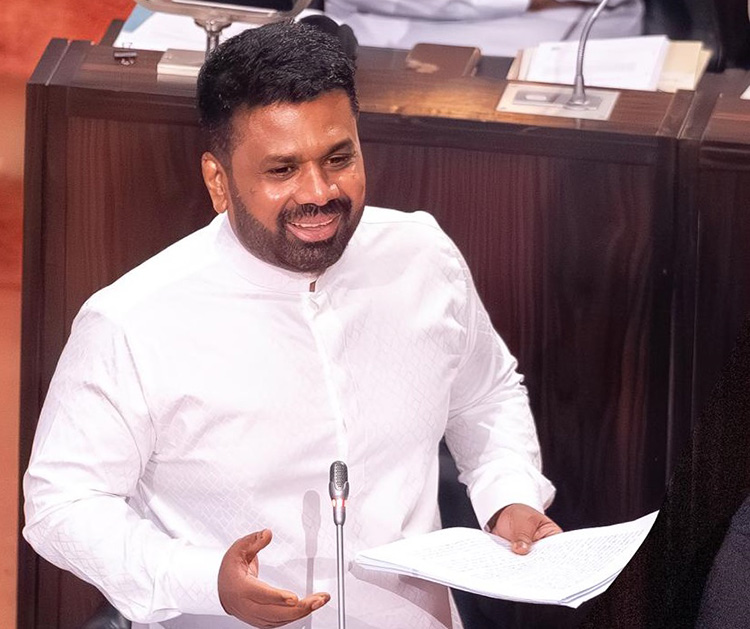
Sri Lanka is now grappling with the aftermath of the one of the gravest natural disasters in recent memory, as Cyclone Ditwah and the associated weather system continue to bring relentless rain, flash floods, and landslides across the country.
In view of the severe disaster situation, Speaker Jagath Wickramaratne had to amend the schedule for the Committee Stage debates on Budget 2026, which was subsequently passed by Parliament. There have been various interpretations of Budget 2026 by economists, the business community, academics, and civil society. Some analyses draw on economic expertise, others reflect social understanding, while certain groups read the budget through political ideology. But with the country now trying to manage a humanitarian and economic emergency, it is clear that fragmented interpretations will not suffice. This is a moment when Sri Lanka needs a unified, responsible, and collective “national reading” of the budget—one that rises above personal or political positions and focuses on safeguarding citizens, restoring stability, and guiding the nation toward recovery.
Budget 2026 is unique for several reasons. To understand it properly, we must “read” it through the lens of Sri Lanka’s current economic realities as well as the fiscal consolidation pathway outlined under the International Monetary Fund programme. Some argue that this Budget reflects a liberal policy orientation, citing several key allocations that support this view: strong investment in human capital, an infrastructure-led growth strategy, targeted support for private enterprise and MSMEs, and an emphasis on fiscal discipline and transparency.
Anyway, it can be argued that it is still too early to categorise the 2026 budget as a fully liberal budget approach, especially when considering the structural realities that continue to shape Sri Lanka’s economy. Still some sectors in Sri Lanka restricted private-sector space, with state dominance. And also, we can witness a weak performance-based management system with no strong KPI-linked monitoring or institutional performance cells. Moreover, the country still maintains a broad subsidy orientation, where extensive welfare transfers may constrain productivity unless they shift toward targeted and time-bound mechanisms. Even though we can see improved tax administration in the recent past, there is a need to have proper tax rationalisation, requiring significant simplification to become broad-based and globally competitive. These factors collectively indicate that, despite certain reform signals, it may be premature to label Budget 2026 as fully liberal in nature.
Overall, Sri Lanka needs to have proper monitoring mechanisms for the budget. Even if it is a liberal type, development, or any type of budget, we need to see how we can have a budget monitoring system.
Establishing a National Budget Performance and Evaluation Office
Whatever the budgets presented during the last seven decades, the implementation of budget proposals can always be mostly considered as around 30-50 %. Sri Lanka needs to have proper budget monitoring mechanisms. This is not only important for the budget but also for all other activities in Sri Lanka. Most of the countries in the world have this, and we can learn many best practices from them.
Establishing a National Budget Performance and Evaluation Office is essential for strengthening Sri Lanka’s fiscal governance and ensuring that public spending delivers measurable value. Such an office would provide an independent, data-driven mechanism to track budget implementation, monitor programme outcomes, and evaluate whether ministries achieve their intended results. Drawing from global best practices—including India’s PFMS-enabled monitoring and OECD programme-based budgeting frameworks—the office would develop clear KPIs, performance scorecards, and annual evaluation reports linked to national priorities. By integrating financial data, output metrics, and policy outcomes, this institution would enable evidence-based decision-making, improve budget credibility, reduce wastage, and foster greater transparency and accountability across the public sector. Ultimately, this would help shift Sri Lanka’s budgeting process from input-focused allocations toward performance-oriented results.
There is an urgent need for a paradigm shift in Sri Lanka’s economy, where export diversification, strengthened governance, and institutional efficiency become essential pillars of reform. Establishing a National Budget Performance and Evaluation Office is a critical step that can help the country address many long-standing challenges related to governance, fiscal discipline, and evidence-based decision-making. Such an institution would create the mechanisms required for transparency, accountability, and performance-focused budgeting. Ultimately, for Sri Lanka to gain greater global recognition and move toward a more stable, credible economic future, every stakeholder must be equipped with the right knowledge, tools, and systems that support disciplined financial management and a respected national identity.
by Prof. Nalin Abeysekera ✍️
-
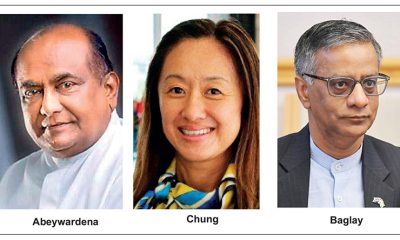
 Features5 days ago
Features5 days agoFinally, Mahinda Yapa sets the record straight
-

 News7 days ago
News7 days agoOver 35,000 drug offenders nabbed in 36 days
-
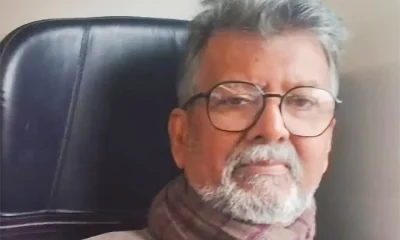
 News6 days ago
News6 days agoCyclone Ditwah leaves Sri Lanka’s biodiversity in ruins: Top scientist warns of unseen ecological disaster
-

 News7 days ago
News7 days agoRising water level in Malwathu Oya triggers alert in Thanthirimale
-
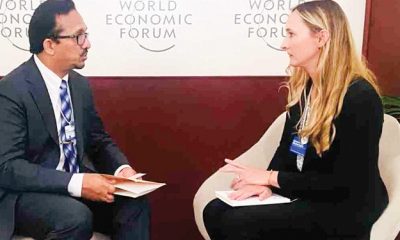
 Features5 days ago
Features5 days agoHandunnetti and Colonial Shackles of English in Sri Lanka
-

 Business4 days ago
Business4 days agoCabinet approves establishment of two 50 MW wind power stations in Mullikulum, Mannar region
-

 News7 days ago
News7 days agoJetstar to launch Australia’s only low-cost direct flights to Sri Lanka, with fares from just $315^
-

 News7 days ago
News7 days agoNew landslide alerts as Ditwah aftermath worsens















